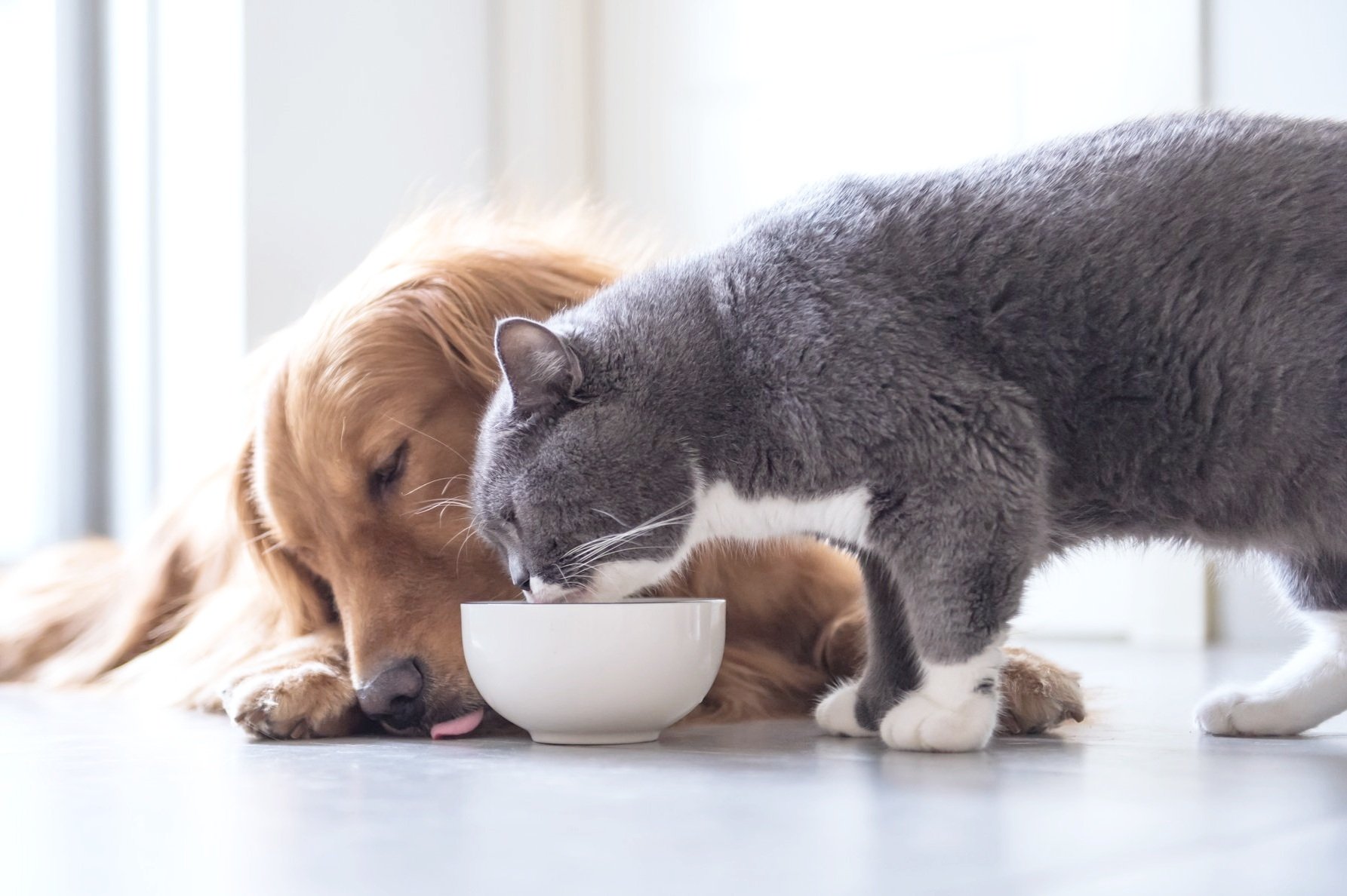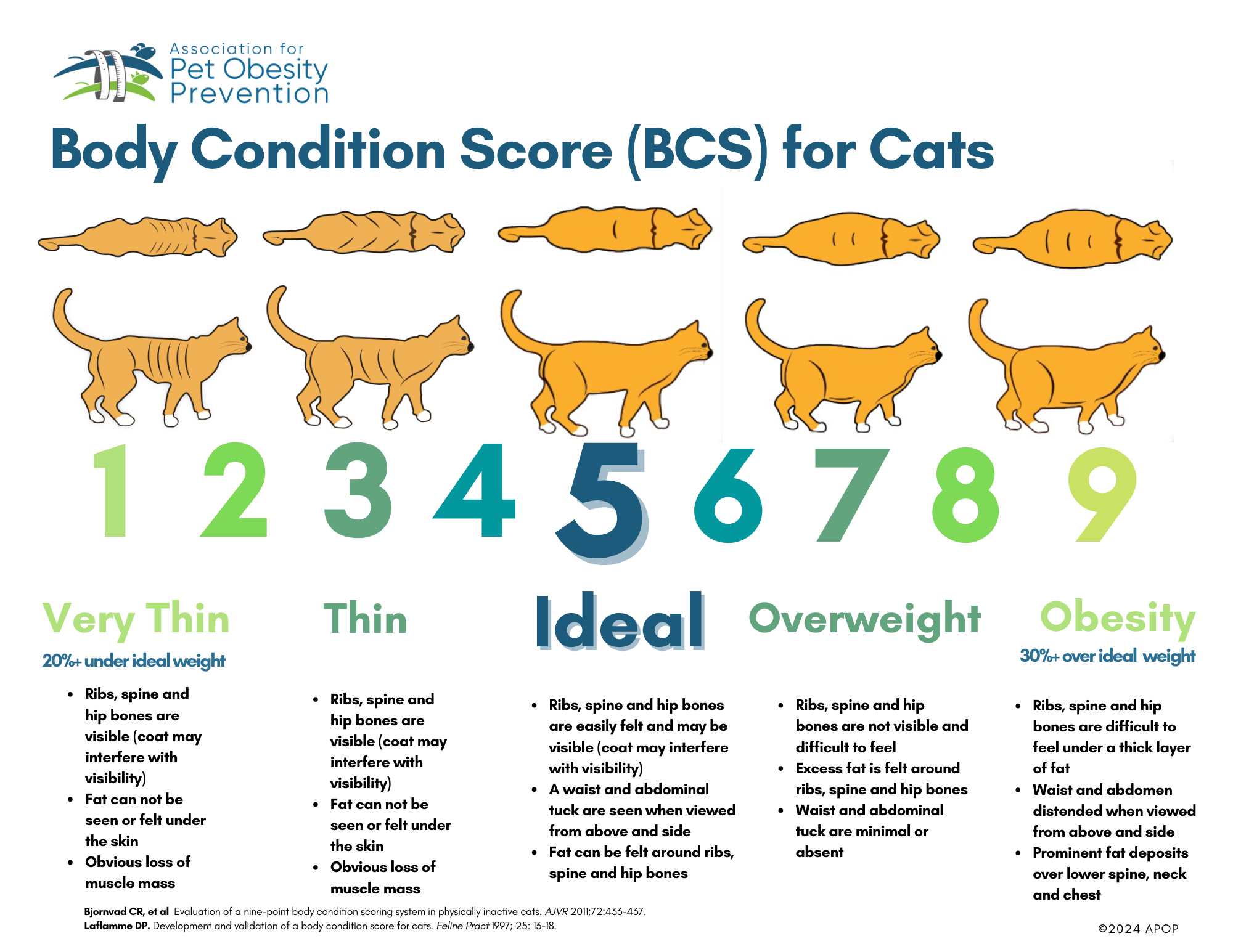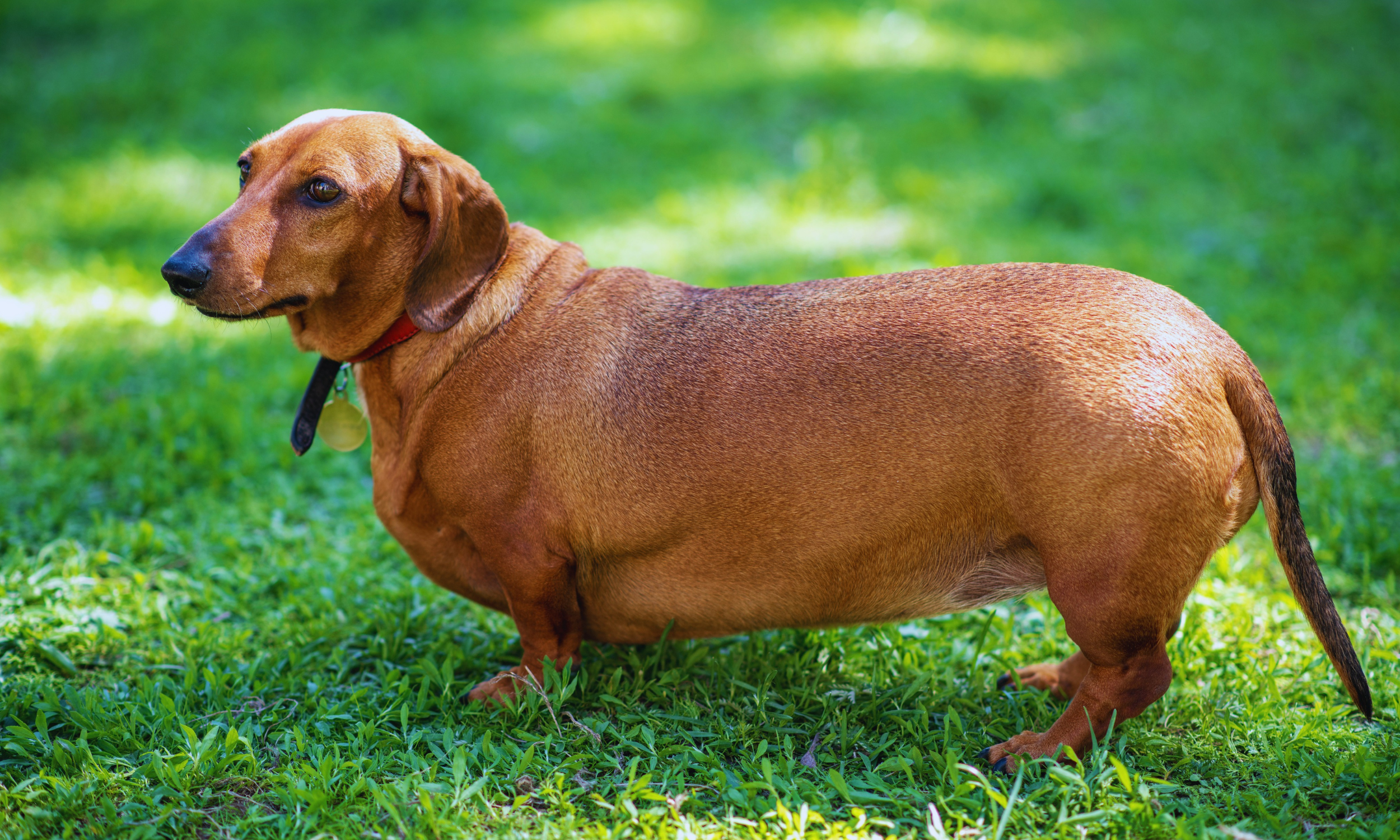
Body Condition Scoring (BCS)
Start measuring your pet’s health
Determine your pet’s body condition with a Body Condition Score (BCS).
Weigh your pet and track weight to compare over time.
Determine daily caloric needs.
Measure or weigh your pet’s meals and treats. How many calories and servings are you actually giving your pet?
In the 2022 APOP State of Pet Obesity, approximately one-third of pet owners overweight or with obesity mistakenly believed their animals had a normal or ideal body condition, placing their pets at risk for developing various weight-related diseases.
We urge pet owners and veterinarians to take a few simple measurements that have a daily huge impact on their pet’s health!
-
A BCS is a quantitative tool to used widely by veterinarian’s to evaluate an animal’s body condition, fat accumulation, and nutritional status.
The preferred BCS scale ranges from 1 (emaciated and extremely underweight) to 9 (dangerously obese with an extreme amount of body fat).
An ideal body score is typically a 4 or 5 with a healthy amount of muscle and body fat.
Ribs, spine and hip bones are easily felt and my be visible (coat my interfer with visibility).
A waist and abdominal tuck are seen when viewed from above and side.
Fat can be felt around ribs, spine and hip bones.
-
1. Rib Check
You should easily feel your dog or cat’s ribs when you gently run your fingers along their side. A healthy-weight pet will have a thin layer of fat over the ribs and spine that you can feel but not see. If you feel a thick layer of fat, your pet may be overweight.
2. Waist Check
Looking at your pet from above your dog or cat should have a visible waist behind the ribs that tapers slightly towards the hips with a slight indentation near the midsection. If your pet does not have a visible waist or has a bulging waist, they may be overweight.
3. Tummy Test
Standing next to your pet, look at them from the side. You should see a slight tuck or upward slope in the tummy area. If the abdomen hangs low and appears bulging or sagging, it could indicate the presence of abdominal fat, which is the most dangerous and biologically active form of fat.
If you suspect your pet is overweight, talk to your veterinarian healthcare team. Routine examinations and weight checks can catch unwanted weight gain early.
-
Does your dog or cat’s tummy sag and dips toward the floor?
Cats have a primordial pouch, a natural belly or skin flap that hangs down near the cat’s hind legs. The primordial pouch is a normal and functional part of a cat’s anatomy and not a result of obesity or weight gain.
Sorry, doggos, you don’t have a similar feature!
Pets with a healthy body condition will have firm, upward-trending underbelly that trends upward instead of a sagging one.
-
For general health tracking and monitoring, pet owners should weigh their pets every 1-6 months.
Regularly weighing and tracking weight over time can help catch unwanted weight gain early allowing adjustments to diet, treating behavior, lifestyle, and exercise routines.
If a pet is on a weight-loss diet, a general guideline is to weigh your pet once a month to track progress and make any adustments. Weight loss should gradual, controlled, and under the guideance of the healthcare team.
-
A few pounds above your dog’s ideal weight can put it at risk of developing some serious medical conditions. Unfortunately, when a dog is diagnosed as overweight or with obesity, it is no longer a question of “if” your dog will develop a condition secondary to the excess weight but “how many and how soon!”


How can I tell if my dog or cat is overweight or has obesity?
1. Feel your pet’s body. You should easily feel and count your pet’s ribs when you gently run your fingers along their side. A healthy-weight pet will have a thin layer of fat over the ribs and spine that you can feel but not see. If you feel a thick layer of fat, your pet may be overweight.
2. Look at your pet from above. Stand over your pet and observe its body. Your pet should have a visible waist behind the ribs that tapers slightly towards the hips with a slight indentation near the midsection. If your pet does not have a visible waist or has a bulging waist, it may be overweight.
3. Look at your pet from the side. Stand next to your pet and examine its profile as it stands naturally. You should see a slight tuck or upward slope in the tummy area. If the abdomen hangs low and appears bulging or sagging, it could indicate the presence of abdominal fat, which is the most dangerous and biologically active form of fat.
4. Check your pet’s weight. Regularly weigh your pet and track its weight over time. This practice can help you and your veterinary team monitor your pet’s weight and determine if any adjustments are needed in their lifestyle, diet, or exercise routine.
5. Schedule routine check-ups with your veterinarian and discuss your pet’s body condition. If you suspect your pet is not in an ideal body condition, consult your veterinary healthcare team for guidance and assessments during check-ups.
People often under- and overestimate their pet’s body condition, even when using a BCS chart. It is important to discuss your pet’s ideal weight and nutritional needs with your veterinary healthcare team.
The 5 biggest questions you should ask your veterinarian to prevent pet obesity: How to check, what to feed, and how to exercise.
Pets with obesity are at increased risk for developing serious weight-related disorders such as diabetes, arthritis, high blood pressure, kidney disease, cancer, and more.
To help you better care for your dog or cat, here are five questions you should ask your veterinarian to keep your pet healthy. They’re simple, won’t embarrass you, and just may save your pet’s life.
1) Is my pet overweight?
This is the most important question you must ask your veterinarian – and one your vet may not be eager to answer. Believe it or not, many veterinarians are simply afraid to tell you if your pet is overweight or has obesity. This is primarily due to the fact your veterinarian doesn’t want to offend you inadvertently. Weight issues can be tricky to navigate and loaded with perceived judgments, strong emotions, and social stigmas. All of this leads to many vets remarking, “Maybe Scooter should drop a few pounds, but then again, who shouldn’t?”
As a concerned pet owner, you need to understand your pet’s weight is one of the most influential factors in its longevity, quality of life, and disease prevention. To answer this question, your veterinarian will likely conduct a couple of measurements, determine a Body Condition Score (BCS - see above charts), and measure your pet's current weight.
Ask the question. Demand a thorough assessment. Don’t be offended if the answer isn’t what you expected. This isn’t personal; it’s your pet’s well-being.
2) How many calories should I feed my pet each day?
We’ve got to be specific when it comes to feeding our pets. Don’t fall into the trap of inquiring, “About how much food should I feed my pet?” You’ll probably get a generic, inaccurate response. You need to know the precise number of calories and nutrients your pet needs based on its current body condition and desired goals. By calculating the number of calories your pet needs, you can determine how much to feed, regardless of the type, brand, or formulation of food and treats you feed. This is a subtle but incredibly significant difference. Healthy nutrition is about feeding your pet the proper number of calories, containing the proper nutrients based on its current body condition and health needs.
Your veterinarian should then ask you a few lifestyle questions, perform a couple of calculations, and give you a narrow range of daily calories you should feed. Memorize this number. Find out how many cups or cans of your pet food this equals. Feed that amount.
Don't forget to include treats in your daily caloric counts. Those tiny “calorie grenades” can swiftly sabotage the best dietary plans.
3) How much weight should my pet lose in a month?
If your pet is like the majority of dogs and cats, it’ll need to shed a few unhealthy pounds of excess fat. You need to ask how much weight your pet needs to shed and how long it will take to reach a healthy weight and body condition. I prefer to think in terms of “pounds per month” due to practicality and performance. Monthly weight checks are practical and reasonable for even the busiest pet owners. A weight loss plan’s performance is critical to track and monitoring monthly trends is an accurate indicator of success or stagnation.
In general terms, a dog can safely lose 1 to 3 percent of its body weight and cats 0.5 to 2 percent per month. Many supervised dogs can safely lose up to 3 to 5 percent per month, and most cats should aim for about a half-pound (0.5 lb. or 0.25 kg.) per month.
Losing weight isn’t easy or fast for pets, especially cats. If you put your pet on a “crash diet,” they can develop serious medical conditions, including a life-threatening form of liver failure that can occur in less than 72 hours.
Patience is essential for pet weight loss. Most canine patients will have a 3 to 6-month weight loss plan, and cats 6 to 12 months. Your veterinarian will probably formulate a step-weight loss plan that will gradually decrease the amount you’re feeding over a 1 to 3-month period. This will help curtail cravings, begging, and late-night pestering.
Note I said “help,” not “eliminate.” There will be some unhappy pooches and purr babies when you institute a diet. Your veterinarian should provide you with tips on preventing these behaviors and transitioning to a new weight-loss diet.
4) What type of exercise does my pet need?
Most veterinarians and pet owners focus on how long a pet should exercise each day. While that’s an excellent approach, I also advise asking what types of activities are best based on your pet’s species, breed, age, gender, and current physical abilities. The opportunities for physical activity with your pet are limitless: walking, swimming, agility, chasing toys, ball retrieving, and remote-controlled toys, to name a few, but adhering to an exercise program is ultimately determined by your pet’s physical ability and intellectual interest.
The general recommendation is that dogs need at least thirty (30) minutes of physical activity a day, and cats should strive for three five-minute structured play periods.
How you spend those exercise minutes will determine if you do it or not and if you stick to those activities. Make your interactions enjoyable, entertaining, and interactive to keep your dog and cat engaged and enjoying these physical activities.
Cat owners, don’t ignore the essential role of physical activity for your cat’s physical and mental health and well-being. Whether you play with a feather duster or favorite toy, move the food bowl each feeding, or use a hip, high-tech toy, engage your cat’s inner predator and encourage it to pounce, leap, and prowl for several minutes at least three times per day.
Pet activity monitors are a great tool to document how much your pet is walking or playing each day. Better yet, you can share these reports with your veterinarian to identify any deficiencies or ways to optimize your training.
5) Is my pet at risk for a medical problem due to excess weight?
This is a very serious question that you need to understand for your pet’s future.
Dogs and cats with excess fat are at greater risk for developing diabetes, arthritis, high blood pressure, kidney disease, and many forms of cancer.
You need to have a frank conversation with your veterinarian to find out if your pet is potentially facing one of these weight-related disorders. If so, what can you do to reduce their odds of developing these conditions?
Preventing disease is our primary focus and one of the reasons APOP is passionate about the importance of maintaining a healthy weight and proper nutrition.
The most important decision you make each day about your pet’s health is what you choose to feed it. Choose wisely; your pet’s longevity and quality of life depend on it.
It’s never too late to reduce your pet’s chances of contracting one of these serious disorders. Early recognition and awareness are the best defense against many diseases. Begin by asking these questions.
So there you have it, my five biggest questions you should ask your vet about pet obesity. Of course, there are many more topics you need to discuss during your time with your veterinarian, but your pet’s body condition should be covered at every exam.
The few minutes you spend on diet and weight could be the difference between two additional years of high-quality life or a shortened, suffering final stage of life.
Take the time to write down these questions, ask your veterinarian, and act on the answers. Together, you and your veterinary healthcare team can chart a course for a better, longer, and happier life for your pet. It’s totally worth it.



